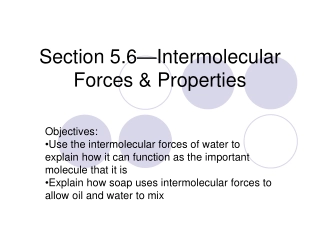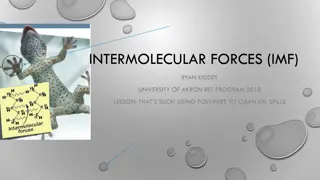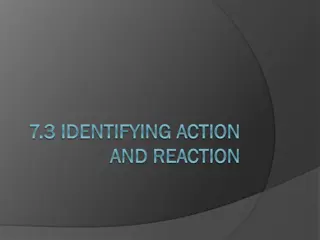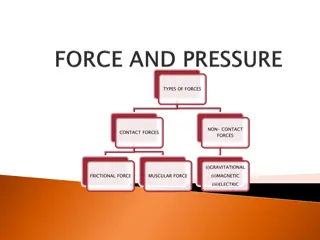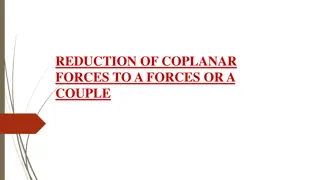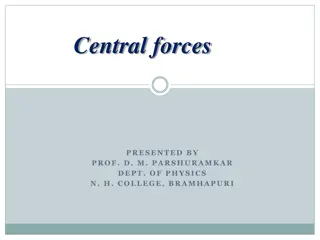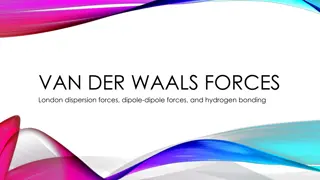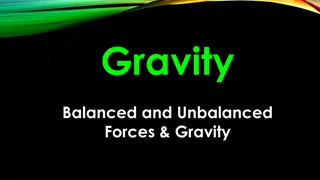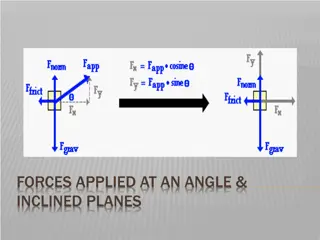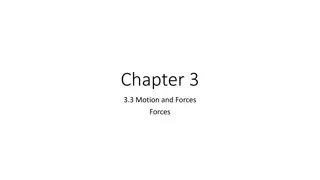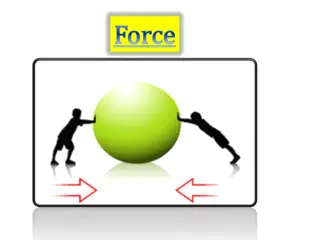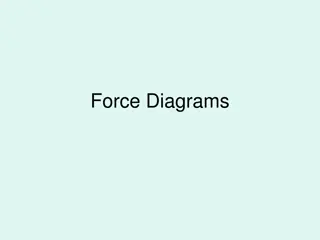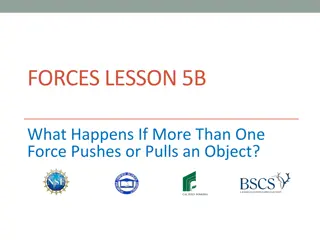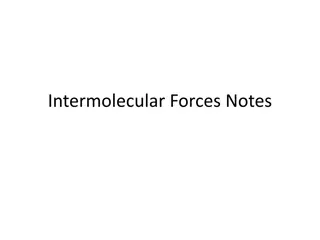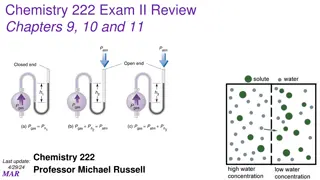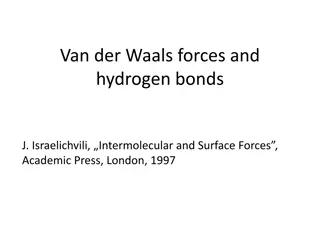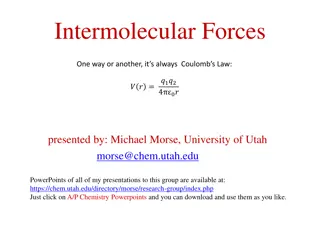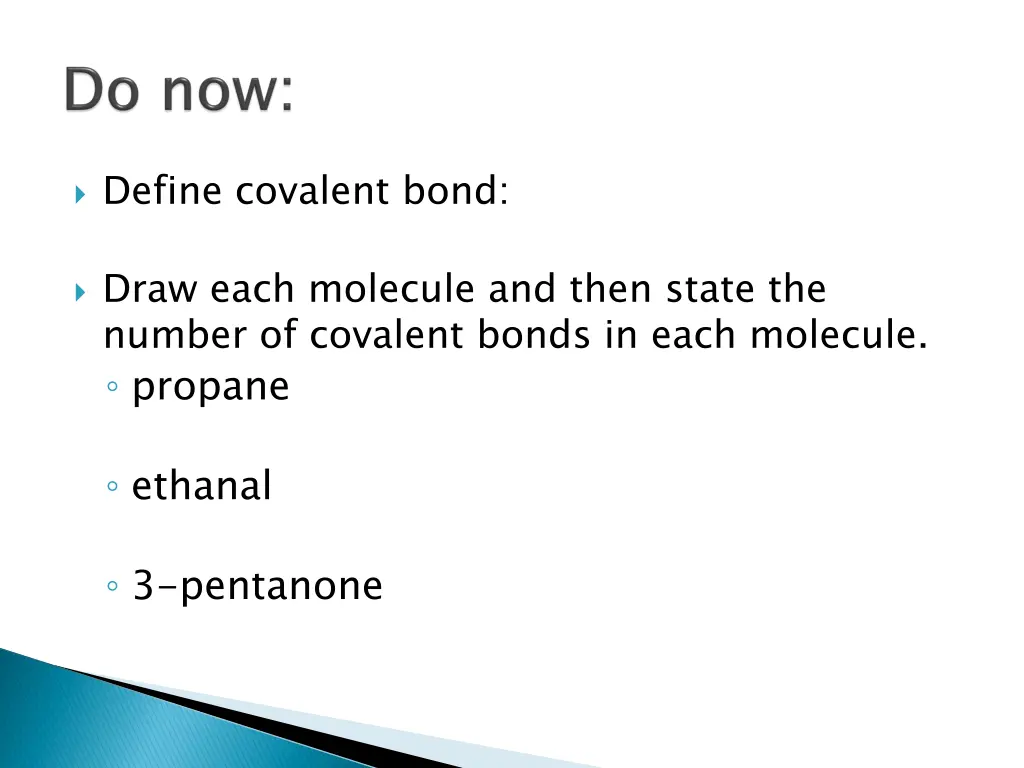
Understanding Covalent Bonds and Molecular Structures
Explore the concept of covalent bonds through the molecules propane, ethanal, and 3-pentanone. Learn about the number of covalent bonds in each molecule and the role of intermolecular forces in molecular behavior.
Download Presentation

Please find below an Image/Link to download the presentation.
The content on the website is provided AS IS for your information and personal use only. It may not be sold, licensed, or shared on other websites without obtaining consent from the author. If you encounter any issues during the download, it is possible that the publisher has removed the file from their server.
You are allowed to download the files provided on this website for personal or commercial use, subject to the condition that they are used lawfully. All files are the property of their respective owners.
The content on the website is provided AS IS for your information and personal use only. It may not be sold, licensed, or shared on other websites without obtaining consent from the author.
E N D
Presentation Transcript
Define covalent bond: Draw each molecule and then state the number of covalent bonds in each molecule. propane ethanal 3-pentanone
Force of attraction from one molecule to another. These are not the covalent bonds that hold the molecule together they are outside the molecule. Gases do NOT have strong IMF. That is why the molecules whiz around and fill up the whole container. Solids have the strongest IMF.
Boiling point (b.p.) the temperature of the phase change from liquid to vapor (gas) B.P. is also the temperature of the transition from gas to liquid Melting point (m.p.) the temperature of the phase change from solid to liquid or from liquid to solid M.p. and b.p. are related. If the m.p. is low, the b.p. will also be low.
molecular formula molecular formula structural formula structural formula name name leave this column blank for now leave this column blank for now ethane chloroethane ethanal ethanol ethanoic acid
Hydrogen bonding Dipole-dipole attraction Dispersion forces
Strongest IMF NOT a bond The hydrogen of one molecule is attracted to the N, O, or F atom on another molecule. Practice: draw 2 water molecules and show the H bonding Practice: draw 2 ethanol molecules and show the H bonding
Practice: draw 2 ethanoic acid molecules and show the H bonding
molecular formula molecular formula name name boiling point ( C) boiling point ( C) type of IMF type of IMF ethane -89 chloroethane 12 ethanal 20 ethanol 78 ethanoic acid 118
Attraction of one polar molecule to another polar molecule. Present in aldehydes and ketones.
Weakest IMF Dispersion force increases as size increases Bigger molecular size higher dispersion force higher b.p. likely to be a liquid at room temperature
Practice: Why is octane a liquid while propane is gas? Octane has a higher m.p. and b.p., because octane has higher IMF. Dispersion forces are higher in octane, because it is a bigger molecule.
molecular formula molecular formula name name boiling point ( C) boiling point ( C) type of IMF type of IMF ethane -89 dispersion chloroethane 12 dispersion ethanal 20 dipole-dipole ethanol 78 H bonding ethanoic acid 118 H bonding

